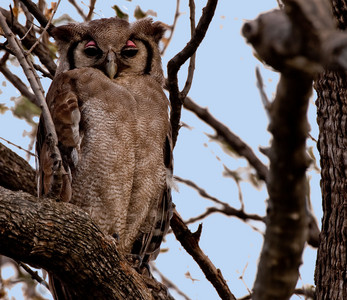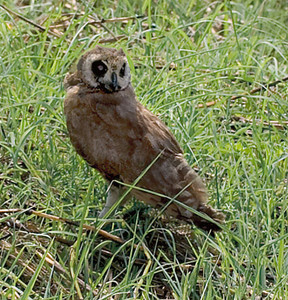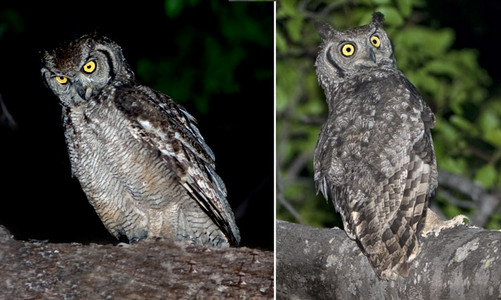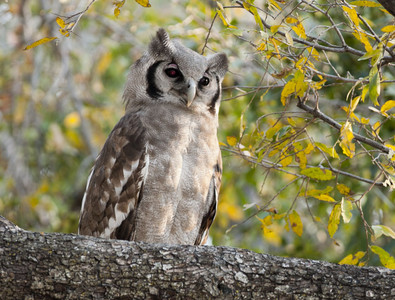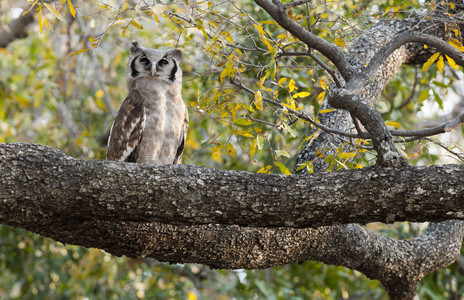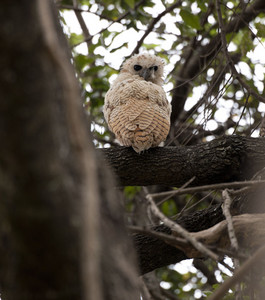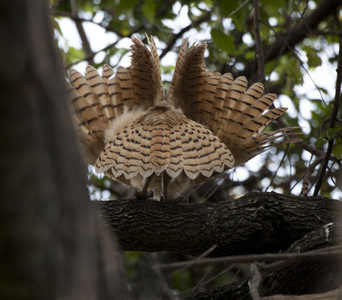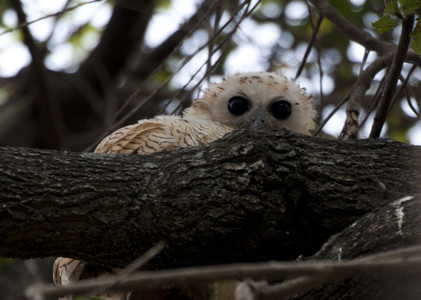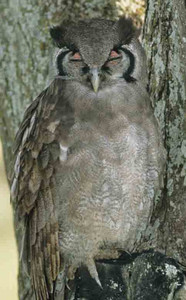
Verreaux's Eagle Owl
A Verreaux's Eagle Owl (also called Giant Eagle owl) is the largest of the African owls, but its size varies in different areas. A large individual like this might prey on mongooses, and even newborn gazelles. It is readily identified by the red color of its upper eyelids. [Serengeti, Tanzania].
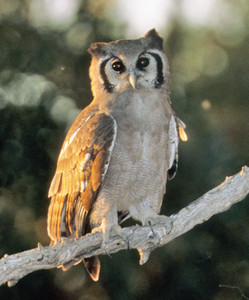
Giant Eagle Owl
A young adult Verreaux's Eagle Owl, smaller than that in the previous image. It was early evening and its eyes are open, and so the red upper eyelashes are barely visible. It could take rabbits and hares, and fairly large birds. (Please see previous image). [Hwange NP, Zimbabwe].
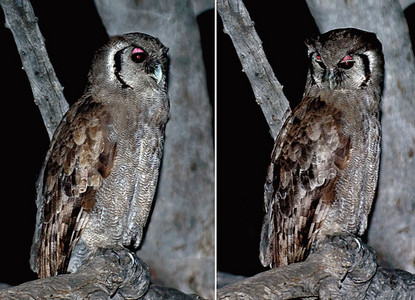
Giant Eagle Owl
A double image: A Verreaux's Eagle Owl with the barring made more prominent, probably because the picture was taken at night with flash.
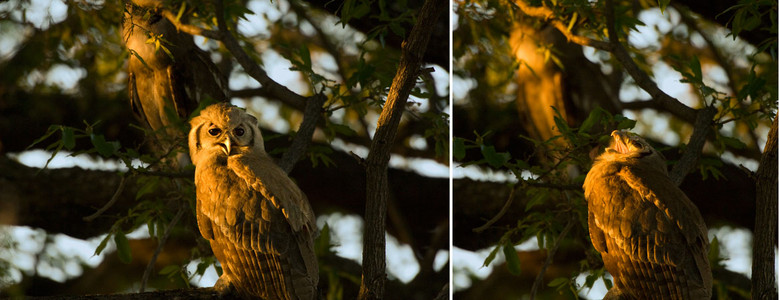
Giant Eagle Owl
A double image of a 7-8 month Verreaux's Eagle Owl chick. Its mother can be partially seen on a limb behind it. Probably, the hungry chick is calling to the father to hurry back with something to eat. Chicks usually stay with their parents for about a year. (Please see captions on previous images). [Xakanaka, Botswana].
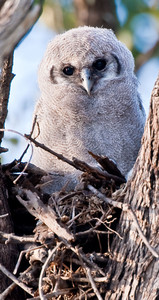
Giant Eagle Owl
We thought that this Verreaux's Eagle Owl baby was abour 6-8 weeks old. It dutifully remained in the nest while both parents went hunting. [Botswana].
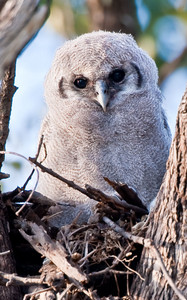
Giant Eagle Owl
Another view of the patient 6-8 week-old Verreaux's Eagle Owl baby. One week separated the taking of this and the preceding picture. [Botswana].
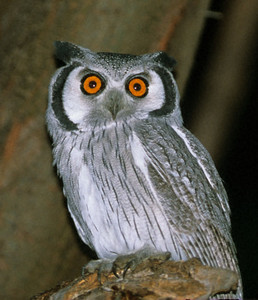
Whitefaced Owl
This picture of a Whitefaced Owl was taken at night with flash. Its food is rodents (incl. small squirrels), small mongooses, dove-sized birds, and insects, [South Zambezi NP, Zambia].
